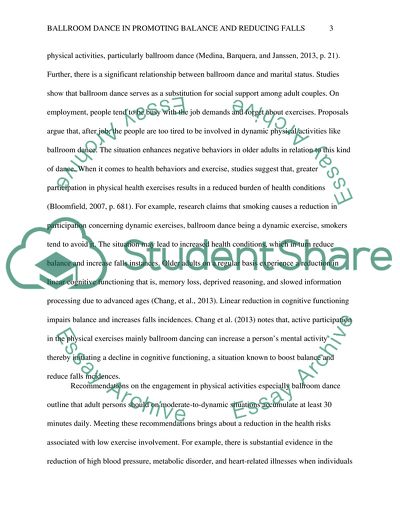Cite this document
(Ballroom Dance in Promoting Balance and Reducing Falls Incidences Research Proposal, n.d.)
Ballroom Dance in Promoting Balance and Reducing Falls Incidences Research Proposal. Retrieved from https://studentshare.org/social-science/1686980-ballroom-dancing-classes-or-any-other-dance-style-where-both-genders-would-be-happy-to-take-part-in-improve-balance-dynamic-and-decrease-falls-incidents-in-healthy-older-adults
Ballroom Dance in Promoting Balance and Reducing Falls Incidences Research Proposal. Retrieved from https://studentshare.org/social-science/1686980-ballroom-dancing-classes-or-any-other-dance-style-where-both-genders-would-be-happy-to-take-part-in-improve-balance-dynamic-and-decrease-falls-incidents-in-healthy-older-adults
(Ballroom Dance in Promoting Balance and Reducing Falls Incidences Research Proposal)
Ballroom Dance in Promoting Balance and Reducing Falls Incidences Research Proposal. https://studentshare.org/social-science/1686980-ballroom-dancing-classes-or-any-other-dance-style-where-both-genders-would-be-happy-to-take-part-in-improve-balance-dynamic-and-decrease-falls-incidents-in-healthy-older-adults.
Ballroom Dance in Promoting Balance and Reducing Falls Incidences Research Proposal. https://studentshare.org/social-science/1686980-ballroom-dancing-classes-or-any-other-dance-style-where-both-genders-would-be-happy-to-take-part-in-improve-balance-dynamic-and-decrease-falls-incidents-in-healthy-older-adults.
“Ballroom Dance in Promoting Balance and Reducing Falls Incidences Research Proposal”, n.d. https://studentshare.org/social-science/1686980-ballroom-dancing-classes-or-any-other-dance-style-where-both-genders-would-be-happy-to-take-part-in-improve-balance-dynamic-and-decrease-falls-incidents-in-healthy-older-adults.


